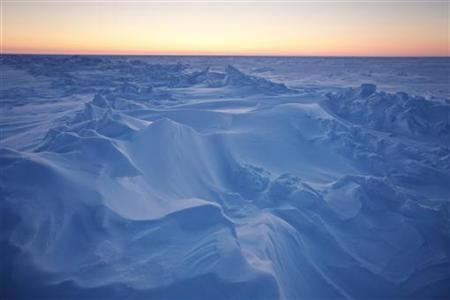Scientists Use Submarine Research To Investigate Turbulence Underneath The Arctic

Not much is known about ocean turbulence underneath the Arctic sea-ice. The decline in the sea-ice extent lets ice-free waters become more turbulent and these may have been causing changes in the chemistry, circulation and the environment in the Arctic Ocean. Scientists at the National Oceanography Centre and the University of Portsmouth have conducted an investigation on this using recent information gathered by the Royal Navy submarine.
The research, published in the Journal of Geophysical Research Letters, demonstrates the Arctic ice sheet’s direct impact on the configuration and constancy of the ocean’s water column and the nature of the turbulence. Energy distribution brought about by the turbulent waters underneath is different from that of open waters. The thick ice protects the ocean waters from air currents. Wind is one of the main factors affecting circulation in most of the Earth’s oceans, but the sea-ice minimises the effect on the Arctic.
Turbulent motions affect the deep ocean currents. Ocean eddies and internal waves mix cold fresh water with saline warm water below and consequently, fasttracks the melting of the ice sheet. As sea-ice loss accelerates, turbulence increases. The NOC’s investigative research can help predict possible changes in the Arctic Ocean circulation as sea-ice thins during the summertime and verify if the intensity of turbulence prevents sea-ice from forming again during the cold season. The findings could provide relevant information for future studies on the Arctic Ocean and for creating models that mimic the Arctic conditions.
Access to information used for this research was only limited to the NOC because of the sensitive nature of the submarine research. The study also contributes to the Arctic Research Programme, a research effort on the Arctic by the United Kingdom, with a £15m funding by the Natural Environment Research Council (NERC).
Prior studies on the turbulence beneath the Artic also demonstrated how warm Atlantic waters move deep into the icy Arctic Ocean and contribute to the sea-ice loss. It highlighted how tidal flows interact with vertical sea bed gradients to cause tidal mixing. In 2011, another group of scientists were able to observe the turbulent motions underneath the sea-ice. The magnitude measured was more than what the team expected.
To contact the writer, email: jm_panganiban@hotmail.com





















